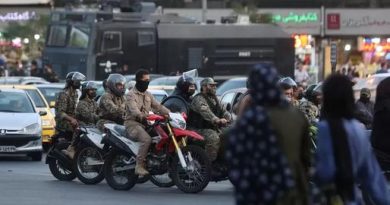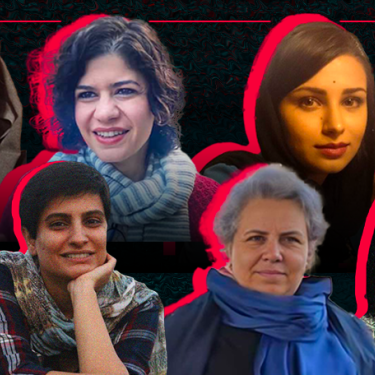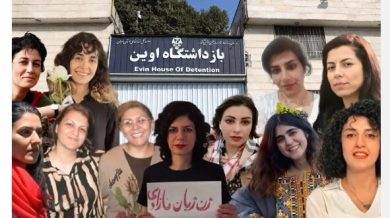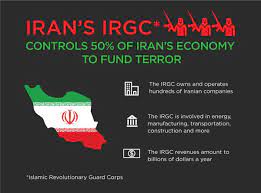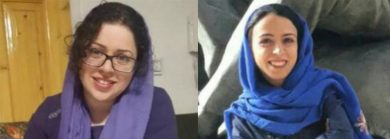This report explores how the Islamic Revolutionary Guard Corps (IRGC) systematically suppresses women’s voices in Iranian media. Using censorship, harassment, imprisonment, and digital warfare, the IRGC targets women journalists, activists, and public figures who challenge the regime’s strict gender norms. This silencing has serious consequences for freedom of expression, gender equality, and human rights in Iran. The report provides documented cases, methods of repression, and international recommendations to counter the IRGC’s information control.
1. Introduction
Iranian women have long played a critical role in advancing civil rights, especially through media and journalism. Yet, in the Islamic Republic, speaking out against systemic injustice can come at a high price—particularly for women. The IRGC, a powerful paramilitary force deeply embedded in Iran’s political and economic systems, serves as the regime’s principal tool for enforcing ideological conformity and suppressing dissent.
Among its many targets, women in media face some of the most brutal crackdowns. This report outlines how the IRGC systematically works to silence women’s voices and truth-tellers who cover gender-based violence, compulsory hijab laws, protests, and government abuse.
2. Media as a Battleground for Gender Rights
A. The Role of Women in Iranian Media
Despite heavy restrictions, women in Iran have been at the forefront of media reform and activism:
• Female journalists have covered protests, political trials, and human rights violations.
• Social media influencers have used online platforms to speak out against forced hijab laws.
• Women filmmakers, writers, and reporters have challenged cultural taboos, pushing for dialogue on freedom, identity, and justice.
B. Why the IRGC Targets Women in Media
The IRGC perceives women journalists and media figures as especially threatening for several reasons:
• They expose state violence against women (e.g. the case of Mahsa Amini).
• Their stories often go viral and spark international outrage.
• They dismantle the regime’s image by portraying a different narrative—one of resistance, dignity, and hope.
3. Tools of Repression: How the IRGC Silences Media Voices
A. Surveillance and Monitoring
The IRGC’s Intelligence Organization closely monitors the media landscape through:
• Monitoring online content for “anti-regime” or “immoral” material.
• Infiltrating newsrooms to identify dissenters.
• Tracking the digital activity of female journalists via spyware and hacking.
B. Intimidation and Harassment
Women in media report constant threats:
• Anonymous phone calls warning them to stop reporting.
• Threats against family members, particularly children.
• Online abuse and defamation campaigns on state-controlled channels.
C. Arrests and Imprisonment
Women journalists are frequently arrested under charges such as:
• “Spreading propaganda against the state.”
• “Acting against national security.”
• “Promoting Western values.”
High-profile cases:
• Niloofar Hamedi and Elaheh Mohammadi: Arrested for reporting on Mahsa Amini’s death.
• Sepideh Gholian: A citizen journalist repeatedly detained and tortured for covering protests and labor issues.
• Nasrin Sotoudeh: Though a lawyer, she has been punished for defending women in media and publishing statements about press freedom.
D. Censorship and Platform Bans
The IRGC, in cooperation with other state agencies:
• Blocks access to foreign news websites and social platforms like Twitter and Facebook.
• Forces domestic news outlets to self-censor or face closure.
• Orders takedowns of viral posts or videos deemed “anti-Islamic” or “anti-state.”
4. Gender-Based Violence in the Name of Control
Targeting women in media goes beyond silencing opinions. It involves:
• Sexual harassment during interrogations.
• Forced confessions aired on national television.
• Solitary confinement and psychological torture.
• Humiliation campaigns designed to discredit them as “immoral” or “traitorous.”
These tactics aim not only to punish but to send a chilling message to other women: Stay silent—or face the same.
5. The Digital Battlefield: Cyber Attacks on Women
Iranian women journalists and activists face:
• Hacking of accounts and personal data leaks.
• Deepfake videos to shame and intimidate them.
• Mass reporting campaigns to shut down their social media presence.
• Government “sock puppet” accounts spreading misinformation about them online.
These tactics aim to erode public trust in women journalists and isolate them from global audiences.
6. The Cost of Silence
Silencing women in media has devastating consequences:
• The erasure of women’s voices in public discourse.
• The spread of unchecked propaganda by the state.
• The deterioration of independent journalism.
• Worsening gender inequality and state-sanctioned misogyny.
The IRGC’s campaign against women’s voices is not just a media issue—it is a full-blown human rights crisis.
7. Resistance and Resilience
Despite all odds, many women continue their work:
• Exiled Iranian journalists work with international outlets like BBC Persian, Iran International, and Voice of America.
• Online campaigns like #MyCameraIsMyWeapon and #JournalismIsNotACrime keep attention on press suppression.
• Underground publications and anonymous blogs continue to circulate inside Iran.
These women show that courage is stronger than censorship.
8. Recommendations for International Action
A. For Governments:
• Designate the IRGC as a terrorist organization where possible.
• Impose sanctions on individuals and institutions involved in media repression.
• Offer asylum and protection to threatened journalists.
B. For Tech Platforms:
• Improve digital security tools for journalists in Iran.
• Create safe reporting mechanisms for harassment and abuse.
• Resist pressure from authoritarian regimes to censor truth-tellers.
C. For Media and Advocacy Groups:
• Amplify voices of Iranian women in media.
• Collaborate with diaspora journalists to keep stories alive.
• Launch awareness campaigns linking media freedom to gender rights.
Conclusion
The IRGC’s war on women’s rights in the media is an assault on truth itself. But Iranian women have shown time and again that their voices are powerful, their stories are unstoppable, and their resistance is historic.
The world must listen, amplify, and act—because freedom of expression and gender equality are not crimes. They are the foundation of every just and free society.
Join Our Newsletter!
Stay informed with the latest updates, news, and ways to take action in the fight for justice and global security. Sign up now to get updates delivered straight to your inbox!

